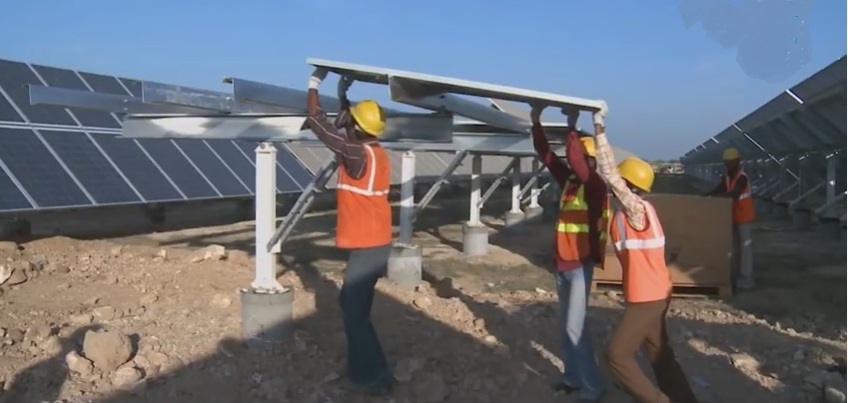The outlook for the capacity addition in the renewable energy (RE) sector remains strong with a large project pipeline of over 55 GW and the highly competitive tariffs offered by these projects, notes credit rating agency ICRA in a release.
The commitment to climate change goals announced by the Prime Minister at the recent COP26 summit, including increasing the non-fossil power capacity to 500 GW and meeting 50 per cent of energy requirement from renewable sources by 2030, further strengthen the investment prospects in the renewable energy sector.
The capacity addition witnessed a strong recovery in the first eight months of FY22 with 8.2 GW added against 3.4 GW added in 8M FY21.
Uptick in RE capacity addition
According to Girishkumar Kadam, Senior Vice President & Co-Group Head – Corporate Ratings, ICRA, “The backlog of the projects awarded by the Central nodal agencies and state distribution utilities remains large with under-development solar, wind and hybrid capacities of more than ~55 GW. “
Basis this pipeline, ICRA expects the RE capacity addition to increase from 7.4 GW reported in FY21 to 12.5 GW in FY22 and further to 16 GW in FY23. This is also supported by the progress shown by Solar Energy Corporation of India (SECI) in signing of power sale agreements (PSAs) & power purchase agreements (PPAs) in the last six months. Within the RE capacity, the capacity addition would be driven by the solar segment followed by the wind and hybrid segments.”
Supply-chain challenges
The downside risksfor renewable energy sector in the near termemanatefrom the execution headwinds and supply chain challenges for procuring modules and wind turbine generators (WTGs).Moreover, the average price of imported solar PV modules (Mono PERC) have increased by over 35% over the past 12 months, putting upward pressure on capital costs for solar power projects. Notwithstanding the same and the recent hike in GST rate for solar power equipment, the solar bid tariffs continue to remain highly competitive as seen from the quoted bid tariff of Rs. 2.17 per unit in December 2021. The ability of the developers to secure modules within their budgeted costs and cost of debt funding at less than 8.5% remains important to make these projects viable.On the other hand, the wind segment continues to witness subdued capacity addition owing to execution headwinds, financing challenges for few developersand weak financial profile of some of the OEMs leading to supply side constraints.
Discom dues
Coming to the collection performance, the overall dues to RE IPPs from distribution utilities (discoms) in the eight key states have gone up by 43% to Rs. 194 billion as of December 2021 from Rs. 136 billion as of July 2021. The can be attributed to the continued delays by discoms in Andhra Pradesh amid the tariff issue and a large increase in dues from Karnataka, Maharashtra, Madhya Pradesh and Telangana amid the liquidity stress faced by discoms in these statesarising from inadequate tariffs and operating inefficiencies.
Implementation of various reform oriented measures as well as timely tariff determination process including the focus on improving operating efficiencies by the state discoms remains key to turnaround the discom finances.
Outlook stable
ICRA’s outlook for renewable energy sector remains Stable driven by the favourable policy support, superior tariff competitiveness, large untapped potential and the presence of strong intermediate procurers like SECI. The credit profile of majority of ICRA-rated solar and wind IPPs in FY22 YTD is supported by the satisfactory generation performance, availability of long-term PPAs, adequate liquidity buffer and presence of strong sponsors.
Source: ICRA Press Release
Featured photograph for representation only



